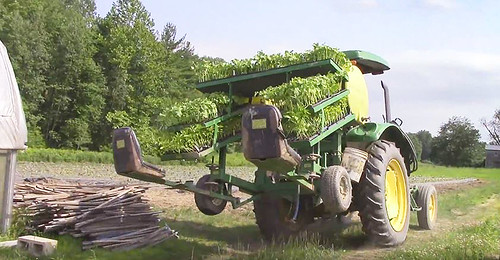
Last month, the USDA Agricultural Marketing Service’s National Organic Program (NOP) announced new resources resulting from our Sound and Sensible Initiative, which is making organic certification more accessible, affordable, and attainable. Today, we are introducing more guides, videos, and other tools – all produced by our partners in the organic community. These resources help farms and businesses understand the USDA organic standards, certification process, and inspections in more depth.
Video: “Organic Myths” (Massachusetts/Baystate Organic Certifiers (MBOC): Farmers and producers who are avoiding organic certification might be making decisions based on outdated assumptions. This video includes interviews with farmers who have completed the certification process—and experienced the benefits.
Checklist: “Ten Steps to Transition” (California Certified Organic Farmers (CCOF): Written for prospective producers, this checklist outlines 10 steps for transitioning to organic certification. This easy-to-scan handout, in both English and Spanish, introduces new farmers to the certification process. Materials also include sample documents for organizations that want to host their own “Certification Made Simple” Workshops.
“How To…” Modules (Massachusetts/Baystate Organic Certifiers - MBOC): This package of how-to guides covers key steps towards organic certification. The primers tackle high-interest topics and provide an organized resource that answers common questions from producers and certifiers.
Tip Sheets: Organic Standards (National Center for Appropriate Technology (NCAT) - West): These resources, in both English and Spanish, summarize the rules and regulations, basic steps, key processes, and additional resources for newly certified operations. Topics include the organic approach to animal health; treatment of sick and injured livestock; organic pest management; soil resources; manure; compost; crop rotation; and transitioning orchards.
Tip Sheets: Organic Certification Guidelines (Northeast Organic Farming Association – Vermont - NOFA-VT): These reference guides are for certified and prospective organic farmers, and provide guidelines for organic certification of dairy, poultry, and crops production. There’s also a document that answers common questions on the organic certification process.
Guide: Recordkeeping Case Studies (Oregon Tilth): Organized recordkeeping is key to maintaining certification. This Recordkeeping Guide features case studies of successful recordkeeping models from different types of farms, ranging from small operations to large, diverse farms.
Organic System Plan Template (NCAT-West): The organic system plan is the cornerstone of any application for certification and the jumping off point for transitioning to organic practices. This streamlined template provides a guide for highly diversified farms to develop organic system plans and provides a starting point for newly accredited certifiers to develop customized templates for prospective producers.
Inspection Report Form (NCAT-West): This inspection report form is meant to be used with ATTRA’s Streamlined Organic System Plan (OSP) for Crop Production, to make the inspection report process more transparent. The generic template can also be used as a teaching tool for producers who want to learn more about the areas the inspector will review during the on-site visit.
Pre-Inspection Questionnaire (ALBA/NCAT): Preparing for an inspection should not be intimidating. Producers can fill out this 18-question pre-inspection questionnaire to help them identify what information and records to have ready before inspectors arrive to ensure a smooth and complete inspection.
Video: “What to Expect When You’re Inspected”: Crop and Livestock Production (International Organic Inspector’s Association - IOIA): These producer-focused videos allow crop and livestock operators to “experience” an inspection firsthand and better prepare for their own inspections. This two-part series follows an organic inspector for a mock inspection of real-life organic farmers, one growing vegetables in South Carolina and the other raising livestock in Georgia, showing producers what to expect at their on-site visit.
